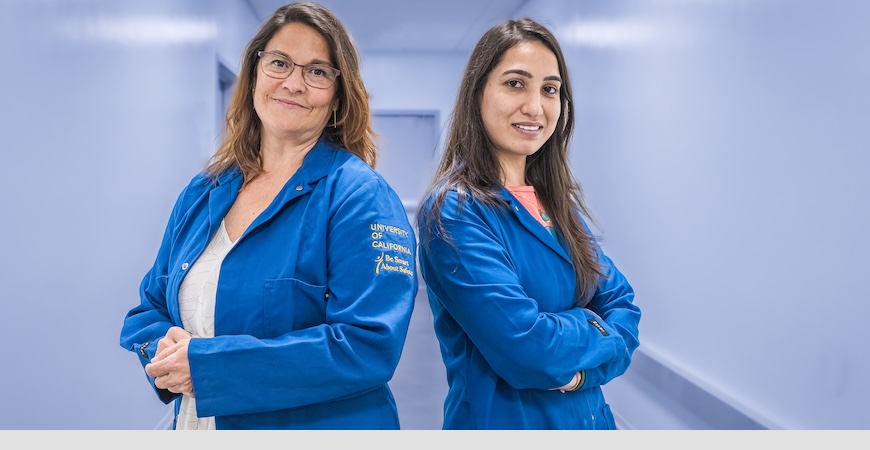
Inflammation is the process by which the human immune system responds to injury and stimulates tissue repair and healing. But it can become a chronic condition, leading to health concerns such as heart disease, diabetes, cancer and arthritis.
UC Merced bioengineering Professor Eva de Alba, a member of the Health Sciences Research Institute, and postdoctoral scholar Meenakshi Sharma have been studying inflammation and the role played by the AIM2(Absent in Melanoma 2) inflammasome.
The journal Nature Communications recently published an open-access paper about their work studying the role of AIM2, a cytoplasmic sensor that binds to DNA.
Obtaining mechanistic and kinetic information on the formation and propagation of the assembly mechanism of AIM2 can shed light on innate immunity's time response and specificity, de Alba and Sharma wrote.
In this work, they identify essential factors controlling the initial phases of inflammasome assembly - information that can be powerful in designing anti-inflammatory therapies. They determine how oligomers, a type of molecule, grow.
"We identify distinct mechanisms for oligomer growth via the binding of incoming AIM2 molecules to adjacent dsDNA or direct interaction with bound AIM2 assemblies, resembling primary and secondary nucleation," de Alba and Sharma wrote. "Through these mechanisms, the size of AIM2 oligomers can increase fourfold in seconds."
The researchers used optical trapping, which uses a laser beam to immobilize objects, and confocal fluorescence microscopy, an optical imaging method, to determine the association and dissociation rates of the AIM2-DNA complex at the level of a single molecule.
They found both small and large AIM2 clusters bound to dsDNA; previously, researchers believed there was only one type of these clusters and they either developed or didn't.
Analyzing their results along with those of other researchers, de Alba and Sharma hypothesized that "once pathogenic dsDNA enters the cytoplasm, AIM2 concentration increases, thus facilitating protein oligomerization and irreversible dsDNA binding, which subsequently leads to active inflammasome formation and downstream signaling until the cell dies."
Learning exactly how inflammation forms has the potential to lead to better treatments.
"This work opens the door to additional studies on other DNA-sensing inflammasomes with the potential to provide novel concepts on comparative assembly rates and regulatory mechanisms," de Alba said.




 Public Information Officer
Public Information Officer

